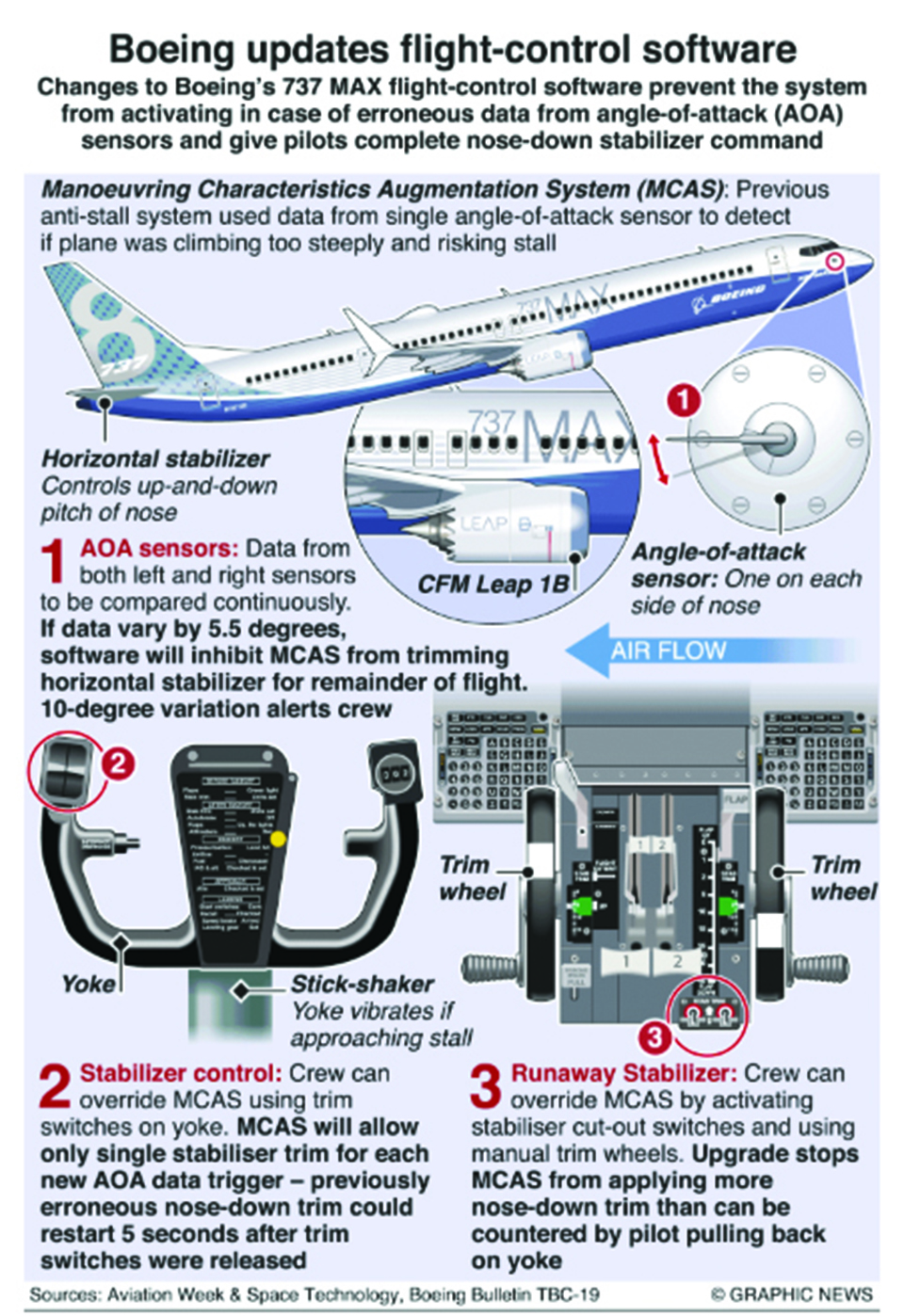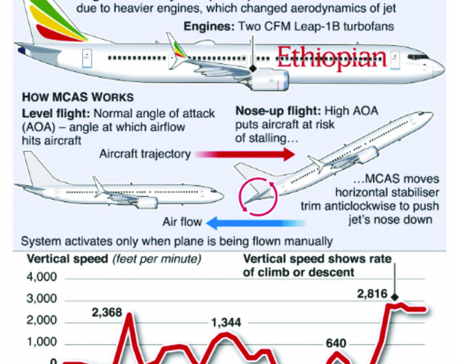
OR
Infographics: Boeing updates flight-control software
Published On: April 2, 2019 12:05 AM NPT By: Republica | @RepublicaNepal

Changes to Boeing’s 737 MAX flight-control software prevent the system from activating in case of erroneous data from angle-of-attack (AOA) sensors and give pilots complete nose-down stabiliser command. Speaking at a briefing of more than 200 pilots and aviation regulators on March 27 at Renton, Washington -- home of the 737 -- Mike Sinnett, Boeing’s vice president for product strategy, outlined three significant changes to the Manoeuvring Characteristics Augmentation System (MCAS). Investigators into the Lion Air Flight 610 accident in October 2018 concluded that erroneous AOA data appeared to trigger an MCAS activation. MCAS was introduced to decrease a pitch-up tendency at elevated AOA found during testing in an extreme part of the flight envelope.
The nacelles (outer covers) of the MAX’s larger CFM Leap 1B engines, which are located farther forward than on earlier 737 models, generated additional lift. The anti-stall system used data from a single angle-of-attack sensor to detect if the plane was climbing too steeply and risking a stall. The left and right sensors alternate between flights, feeding AOA data to MCAS. The first change, “and probably the most important,” Sinnett says, “is that we compare data from left and right AOA sensors full time and when the flaps are up -- in a situation when MCAS would be armed. If they vary by more than 5.5 degrees, the system will inhibit MCAS and the entire speed trim system for the remainder of that flight.”
You May Like This

Infographics: China grounds Boeing 737 MAX 8 jets
An Ethiopian Airlines Boeing 737 MAX 8 flight to Nairobi that crashed on Sunday with 151 passengers and eight crew... Read More...

Infographics: China may weaponise rare earths in trade war with U.S.
China is signalling that it may use rare earths exports as leverage in the trade war with the U.S., as... Read More...

Infographics: No-deal Brexit tariffs revealed
The UK will eliminate import tariffs on a wide range of goods and keep the border between Ireland and Northern... Read More...



Just In
- APF seizes 152 sacks of onions and 32 units of mobile phones from Dhansuha
- 80 civil servants left in the lurch as MoFAGA places them in reserve pool
- Weather Alert: Storm likely in Lumbini and Sudurpaschim
- NOC investing Rs 3 billion to construct fuel storage plants of over 9,000 kl capacities in Bhairahawa
- Reflecting on a festive journey filled with memories and growth
- Dalit sexual and gender minorities lack representation within their own communities and groups
- Nagdhunga-Sisnekhola tunnel breakthrough: Beginning of a new era in Nepal’s development endeavors
- Altitude sickness deaths increasing in Mustang















Leave A Comment